Sushi is just the beginning. We spent a week searching for the best Japanese food in Japan. From small stores like the one below to big hotel restaurants favoured by locals. Here are our favourite Japanese foods to eat in Japan.
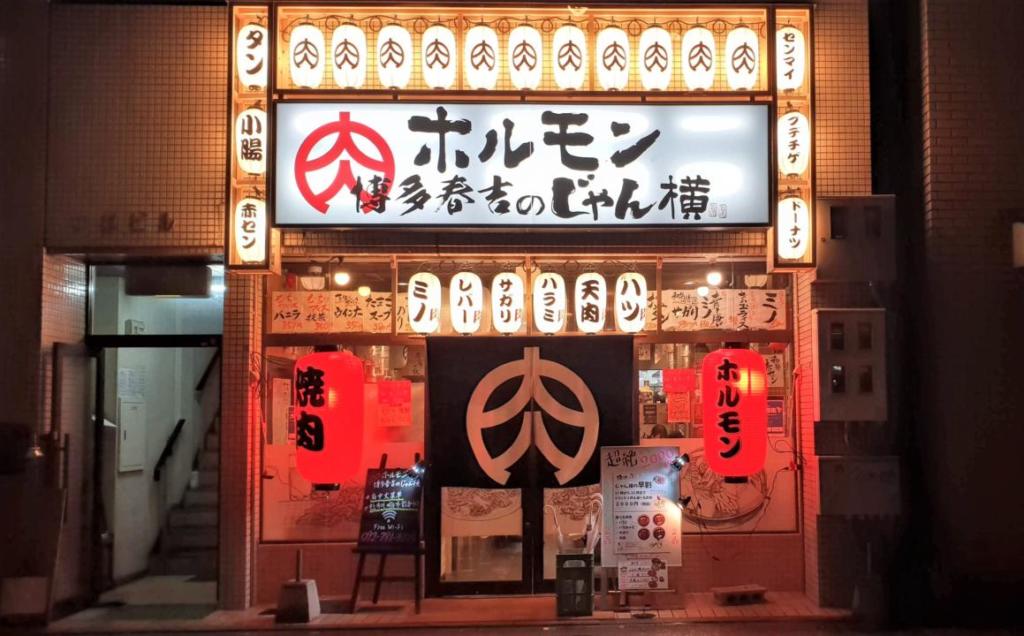
Follow your nose to a BBQ grill. Picture: Alison Godfrey
If you are nervous about eating in a place like the one above – download Google Translate. When you turn on your phone camera and hover over the menu – Google translate will translate the menu from Japanese to English on the spot. Then you won’t order intestine soup – unless you want to.
Wagyu Beef – grilled at your table
Japanese Wagyu beef is tender, delicious and melts in your mouth. The thin ribbons of fat melt into the muscle when cooked, making the meat incredibly tender. One of the best ways to eat Wagyu is marinated and thinly sliced, cooked over a grill. It takes only a few seconds to cook. Make sure you give the meat time to rest.
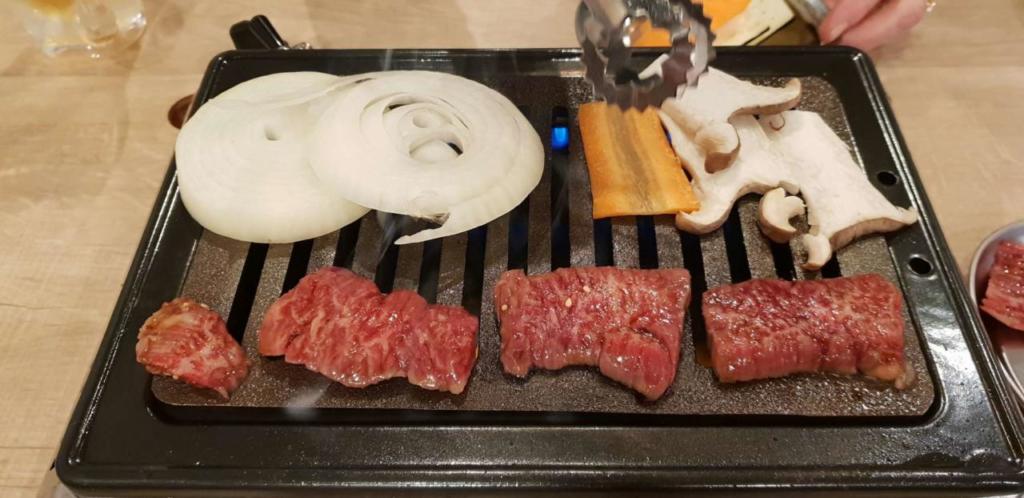
Thin slices of Wagyu beef cooked at the table in Fukuoka.
You will find loads of barbecue restaurants in Japan. The smell will hit you as you walk down the street. It comes from the vents used to extract the smoke and fat from the table.
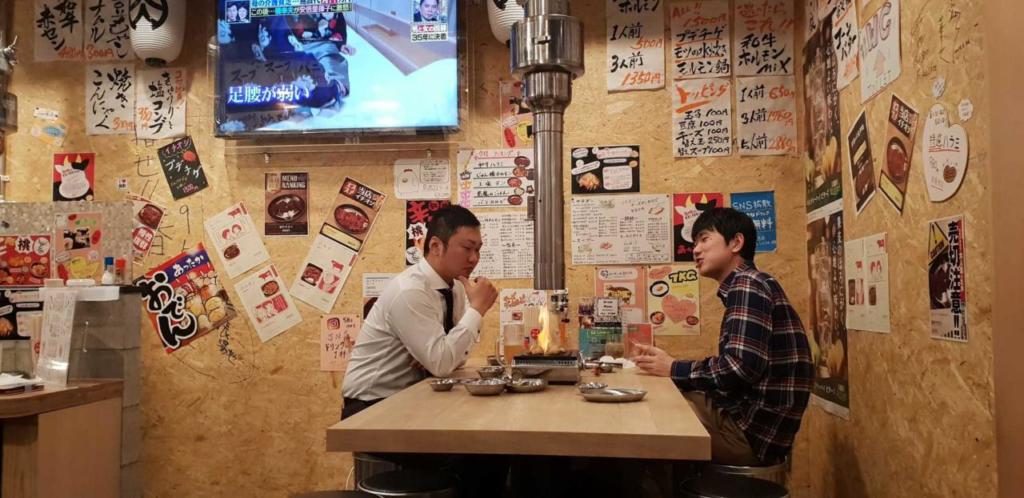
Eating Japanese food in Japan. Alison Godfrey / Family Travel
If you see loads of locals going in – you can be sure it’s good.
Oysters
Oysters in Japan are a pure delight. They are eaten fresh, grilled and even tempura.
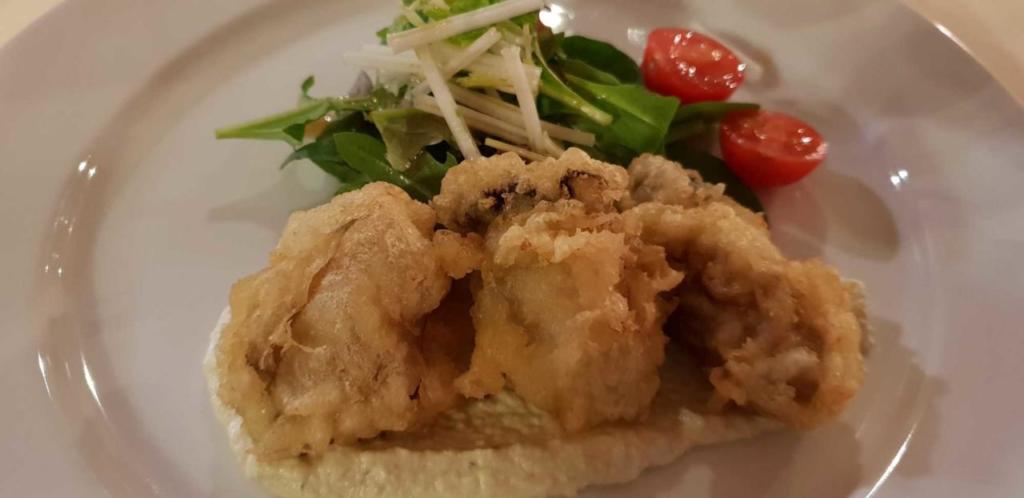
Tempura Oysters in Japan
What does tempura oysters taste like? They are less chewy than fresh oysters. They tend to squelch in your mouth and then go down easy. One of the women on our tour said she never liked oysters. Then she tried oysters tempura and she loved it.
Miyajima island near Hiroshima is famous for grilled oysters. You will find loads of stores along the shopping street. These oysters are huge and fresh. You can’t walk past without trying one.
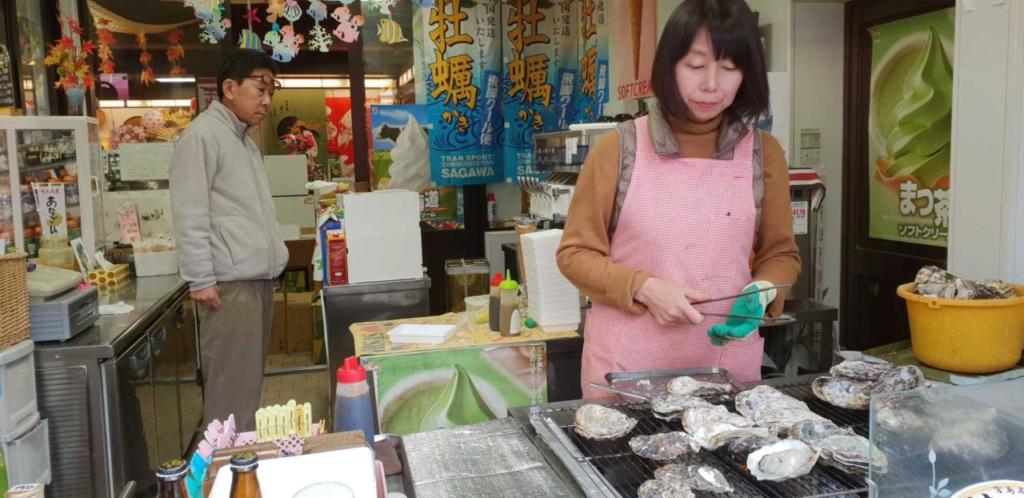
Grilled oysters in Miyajima Japan.
Momiji Manju
If you’re heading to Miyajima Island, you need to try Momiji Manju. This maple leaf-shaped dessert is a local Miyajima island treat.
Momiji Manju is cooked in a maple-shape hot press. Chefs heat the press over a gas flame then they pour batter, similar to pancake batter, into one half of the maple-leaf shaped moulds. On top of that, they add a square of red bean paste or chocolate. The filling is then covered with more batter and rotated to cook.
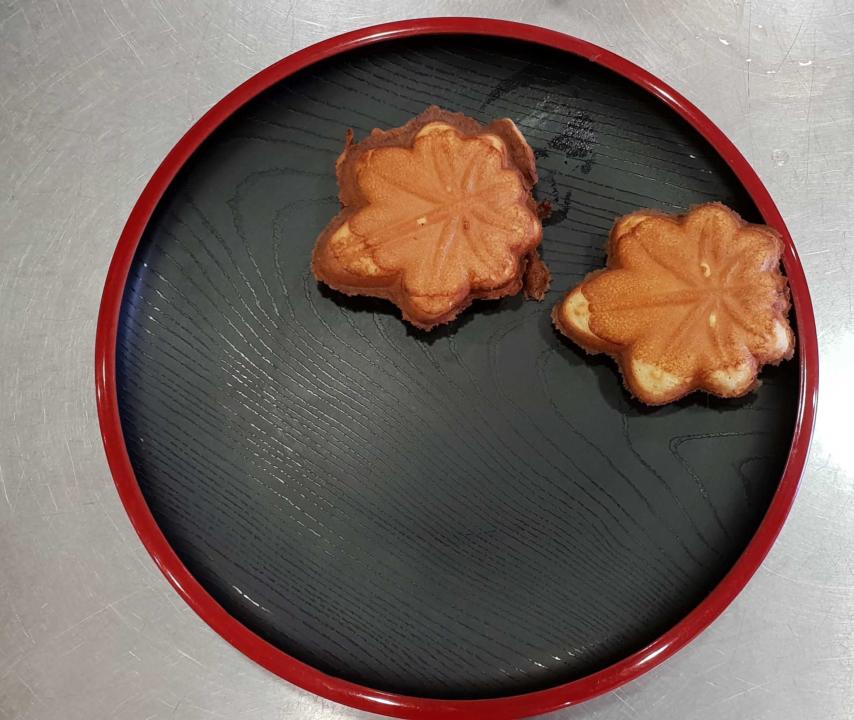
Momiji Manju
The result is a delicious maple leaf shaped pancake treat filled with chocolate. Eat it hot if you can.
Okonomiyaki – Hiroshima Style
Okonomiyaki is a popular Japanese savoury pancake. The Hiroshima style Okonomiyaki has cabbage, bacon, noodles, prawns and egg. Once combined, the ingredients are poured onto a hot plate and grilled. Chefs then add Japanese mayonnaise and a rich sticky brown sauce to the top.
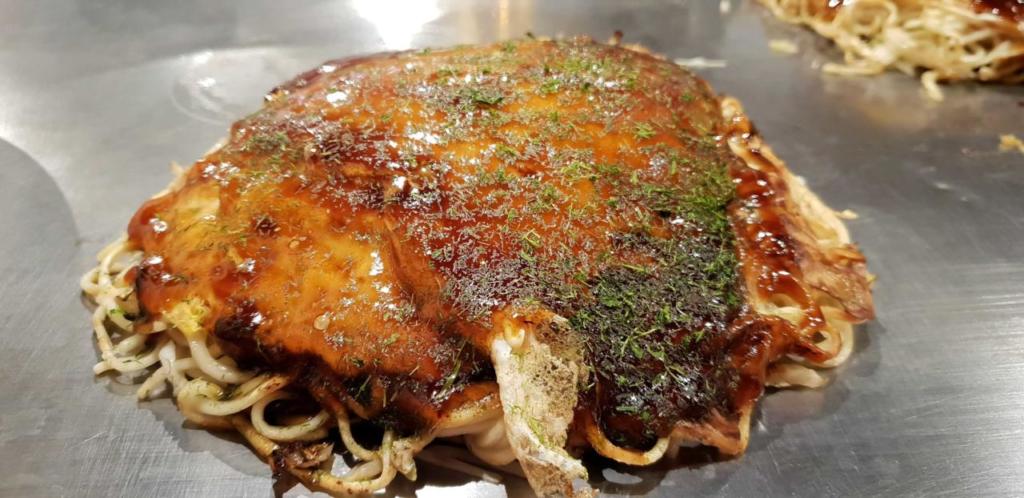
Okonomiyaki Hiroshima style
Okonomiyaki – Osaka Style
If you’re travelling to Osaka you will find the Okonomiyaki doesn’t have noodles. In Osaka Okonomiyaki is made with eggs, shredded cabbage, and flour. The batter is mixed together then poured onto a hot plate. Chefs add bacon slices to the top and, once cooked, mayonnaise and sticky brown sauce.
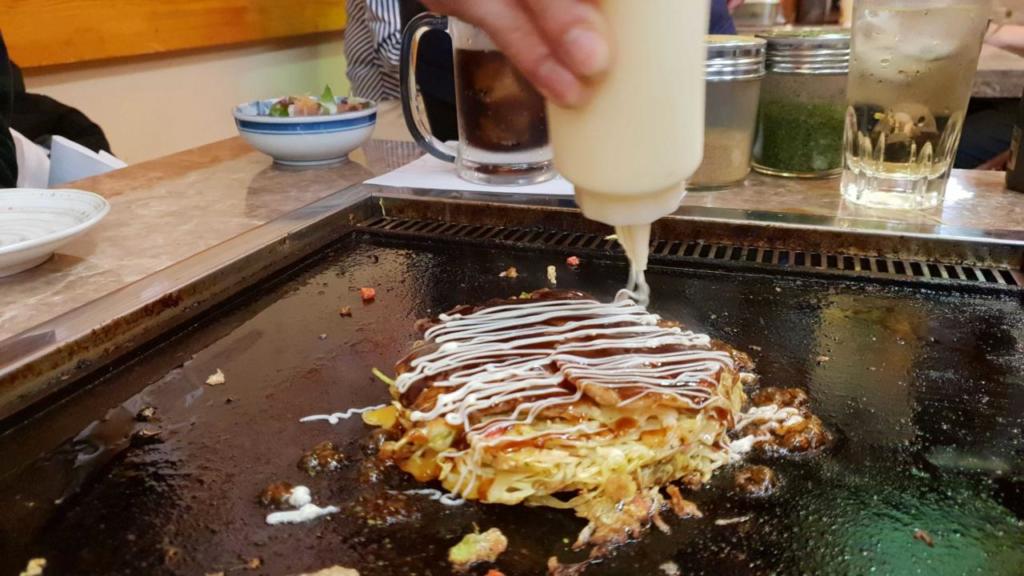
Okonomiyaki Osaka-style
Wasabi
If you believe wasabi is horseradish – you need to wise up. Wasabi should be wasabi. If you think you hate wasabi, try it in Japan. It’s far sweeter than horseradish and the kick isn’t as harsh.
Wasabi is actually a plant of the brassicaceae family, grown in cold climates where there’s an abundance of clean cool water. It should be grated with a shark-skin grater to uphold the best flavour. See how different it looks?
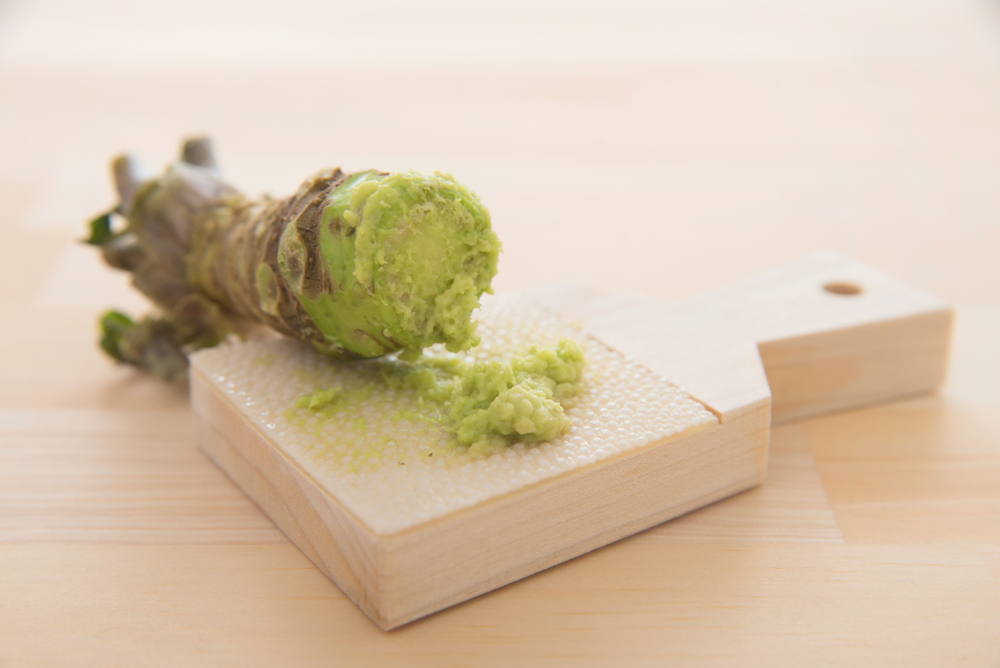
Real Wasabi is something you must try in Japan.
Shabu-shabu
Shabu Shabu is a Japanese hotpot. You take thinly sliced meat and vegetables and slowly wave them in boiling broth for just as long as it takes to say “Shabu, Shabu, that’s enough time for cooking”. Once cooked, you then dip the meat of vegetables in delicious dipping sauces.
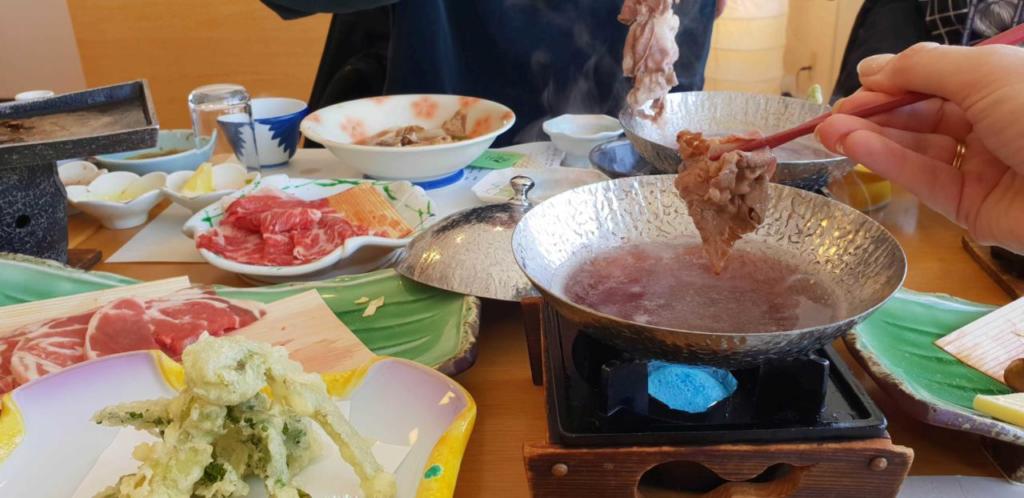
Shabu Shabu in Hiruzen Plateau Okayama Japan
Fugu (Pufferfish)
Remember that Simpsons episode? Yes, Pufferfish (also called fugu or Blowfish) can kill you. But sliced correctly, it’s delicious.
In Japan, Fugu is a delicacy. Chefs train for years to learn how to slice the fish safely. Shimonoseki near Fukuoka in Western Japan is famous for the best Fugu. In this city alone, they call it Fuku – which translates to happiness. You’ll find a huge statue dedicated to Fugu outside the Karato fish market. If you want to taste the best Fugu in Japan – this is the place to do it.
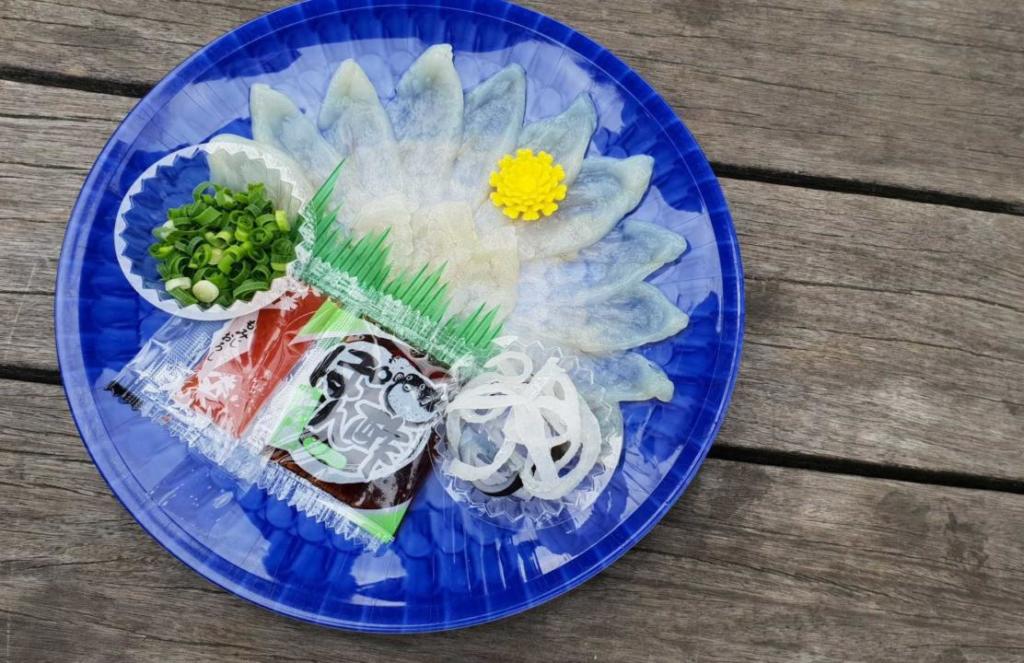
Fugu from Karato fish market in Shimonoseki
Sake
Clearly, this one is just for the adults. Sake is often referred to as Japanese rice wine. Sake is made from fermenting polished rice, clean water, koji mould and yeast. Sake compliments the delicate flavours of Japanese foods particularly well.
You can order sake sweet (ama-kuchi) or dry (kara-kuchi). The sweetness of the sake is listed as a number from -15 (very sweet) to +15 (very dry). The sweetness number should be listed on the menu.
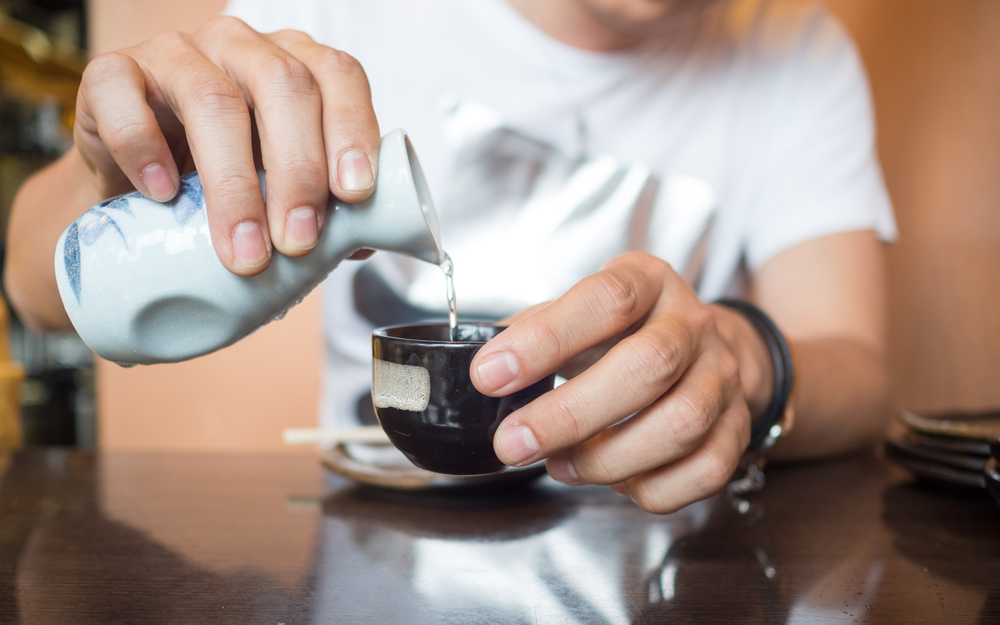
Sake in Japan can be either sweet or dry.
Sashimi and sushi
When in Japan you MUST try sashimi. Even if you think you don’t like it. Give it a try. You might be surprised. How the fish is sliced affects its flavour and texture. Chefs slice fish in different ways depending on their age and species. Japanese chefs can name dozens of different slicing techniques.
What’s the difference between sushi and sashimi? Sashimi is thin slices or raw meat, usually fish such as salmon or tuna. Sushi is vinegared rice mixed with other ingredients – often fish, but not necessarily.
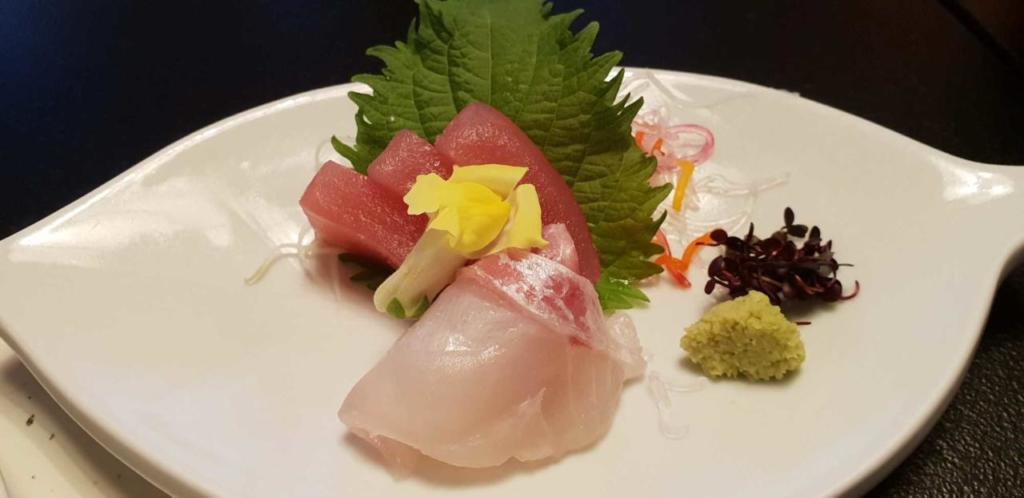
Sashimi in Japan – note the real wasabi.
For the freshest and often cheapest sushi and sushimi head to the fish markets.
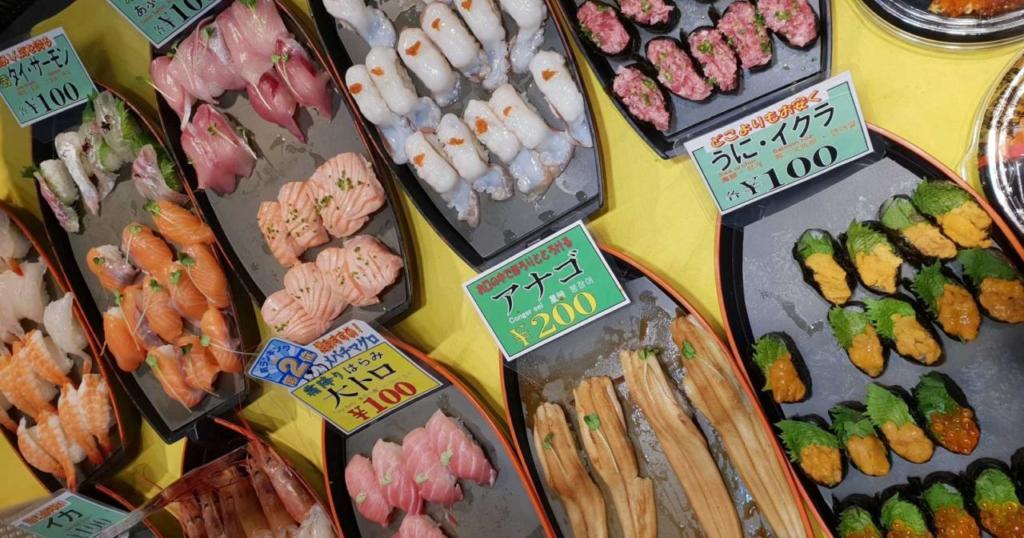
Sushi in the fish market in Japan.
Edamame
Do not make the mistake of eating these beans whole. Edamame is delicious when prepared and eaten correctly, horribly chewy and hairy if you get it wrong.
The Edamame beans are rubbed with spices and cooked on a hotplate. Pop the bean into your mouth and squeeze out the little peas inside. You will get a burst of the spicy flavour on the outside as you suck the beans out. Suck the bean shell and then discard onto your plate.
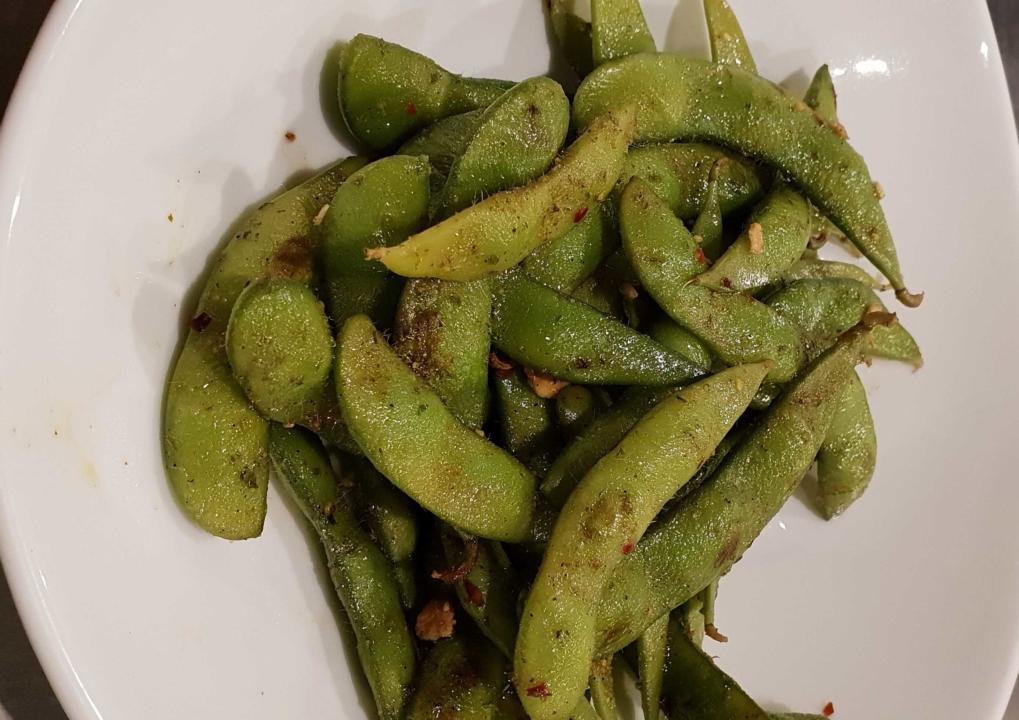
Edamame – Japanese food in Japan
Soba noodles cooked on a roof tile
Soba is the Japanese word for buckwheat. These thin noodles are made from buckwheat and wheat flour. Soba noodles can be eaten chilled with a dipping sauce or with a hot broth as a noodle soup. In Yamaguchi, you can get soba noodles served on a hot roof tile. These ones are green tea flavour, topped with sliced beef and egg roll.
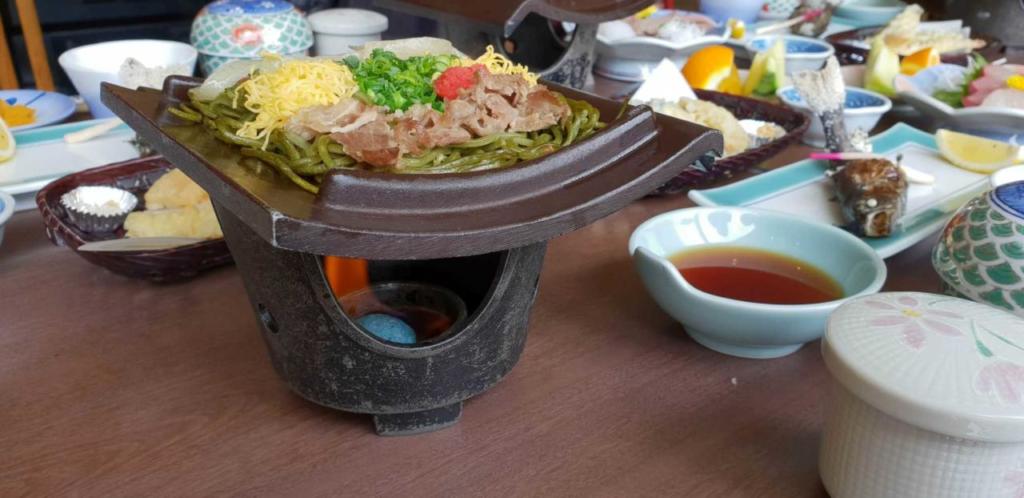
Soba noodles
Pastry and bread – Trust us, Japan’s bakeries are incredible
Japanese bread is so good. Try Anderson’s bakery for a hit of incredible pastry. Bakery aisles are common in supermarkets, convenience stores and department store food courts.
Try Anpan, a sweetened bread roll typically made with sweetened red bean paste. Or a cornet – a sweet cone-shape roll filled with cream or custard. Plain white Japanese bread is called shoku pan.
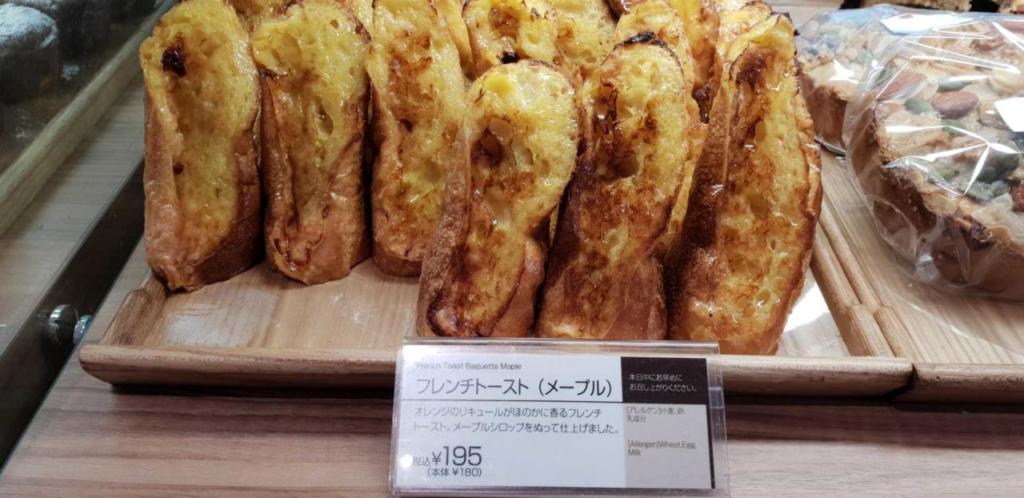
Japanese Bread in Japan.
Snow crab – best eaten in winter
The snow crab is found in the deepest and coldest waters in the Sea of Japan. The best place to eat them is in Shimane, a coastal region on Japan’s west coast. The crab is served either in a hot pot, freshly boiled, grilled and even raw.
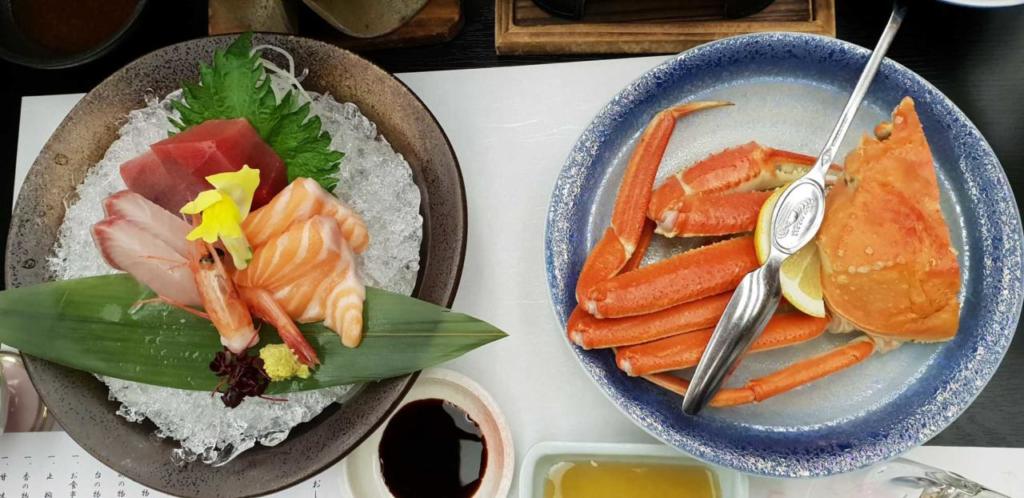
Snow crab in Shimane Japan
Fish head soup – looks weird, tastes delicious
Don’t freak out. It’s not as bad as it looks. Fish head soup is actually really tasty. If the eyes freak you out – turn it over.
However, the best, most delicious meat can be found in the fish cheeks. Use your chopsticks to pick the flesh out of here. It is incredibly soft and tender.
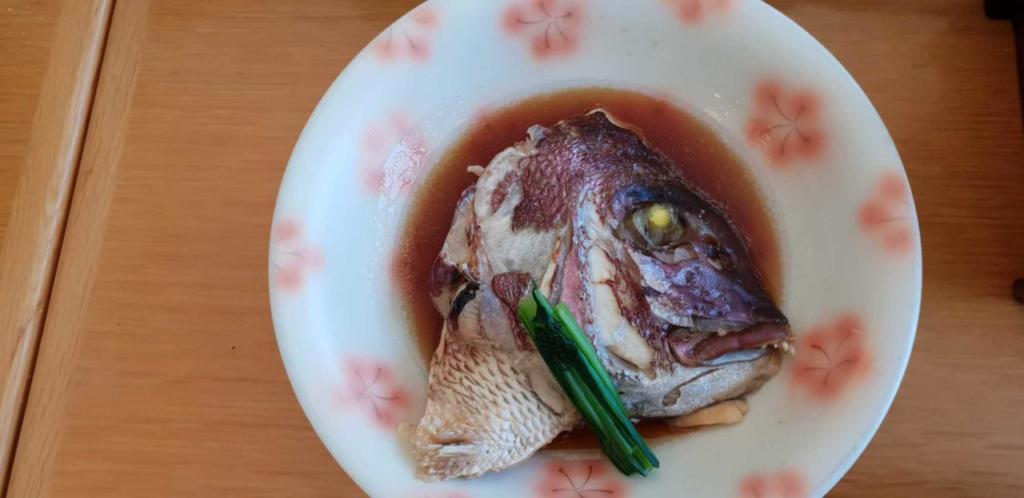
Fish head soup: Japanese food in Japan
Pears
Japanese pears are huge, perfect and delicious. Each different region will have a different type.
When we say huge – they can be as big as your head. Just don’t make the mistake of asking for a nashi pear – Nashi means pear in Japanese.
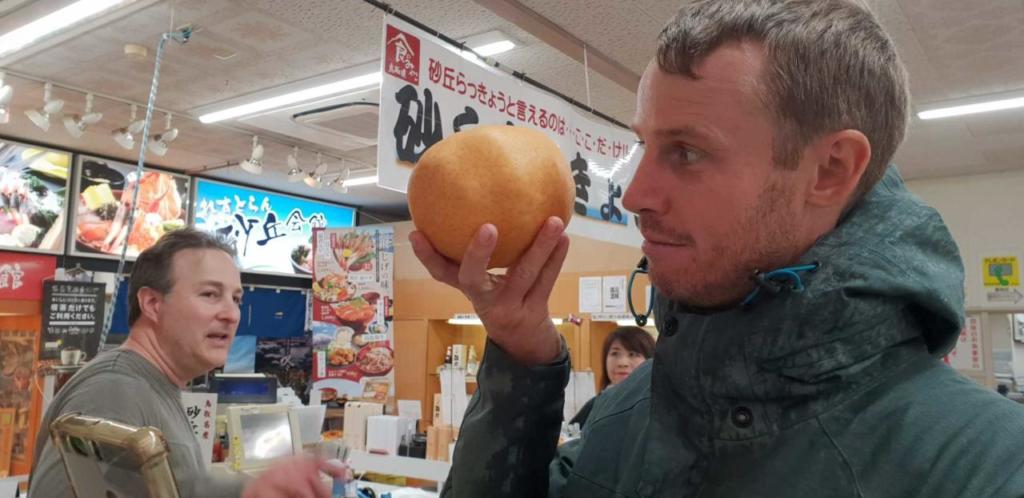
In Japan, pears can grow as big as your head.
Soft serve ice cream
If you haven’t tried Japanese soft serve ice-cream you are missing out. We can assure you that it is made with real milk and real cream – not like the fake stuff made from powder.
What’s really awesome about Japanese soft serve ice cream is the flavours. Strawberry coffee, banana coffee, wasabi caramel. You can even get garlic ice cream. Or chilli ice-cream.
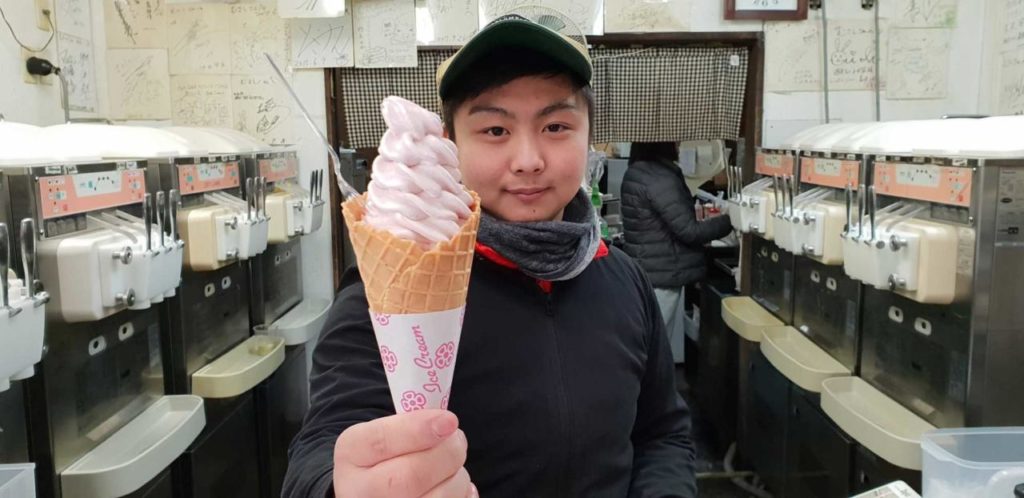
Soft serve ice cream is one of the Japanese foods in Japan you have to try.
You will find little ice-cream outlets all over Japan, in just about every town. The Hiruzen Plateau is famous for its soft-serve ice-cream. The highland plateau in northern Okayama on the border of Tottori Prefecture has a similar landscape to northern Europe. Milk from the Jersey cows raised here produces particularly creamy ice cream and yoghurt. ,
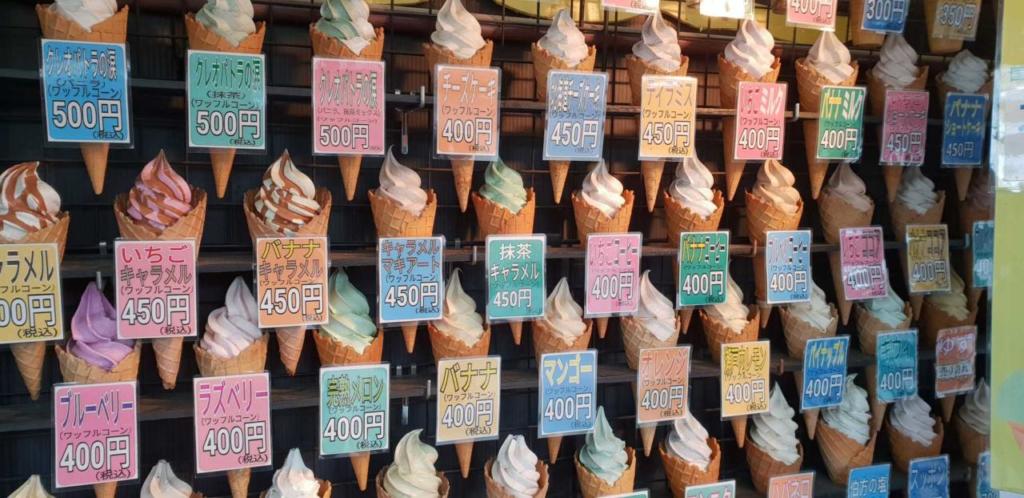
Japanese soft serve ice cream.
Kit Kat
Japan has more than 300 limited edition flavours of Kit Kat. You can get Matcha Kit Kat, Strawberry Kit Kat, Tokyo Banana flavour, baked potatoes, soy sauce, fruit parfait.
Kit Kat sounds like Kitto Katsu – a Japanese expression for good luck.
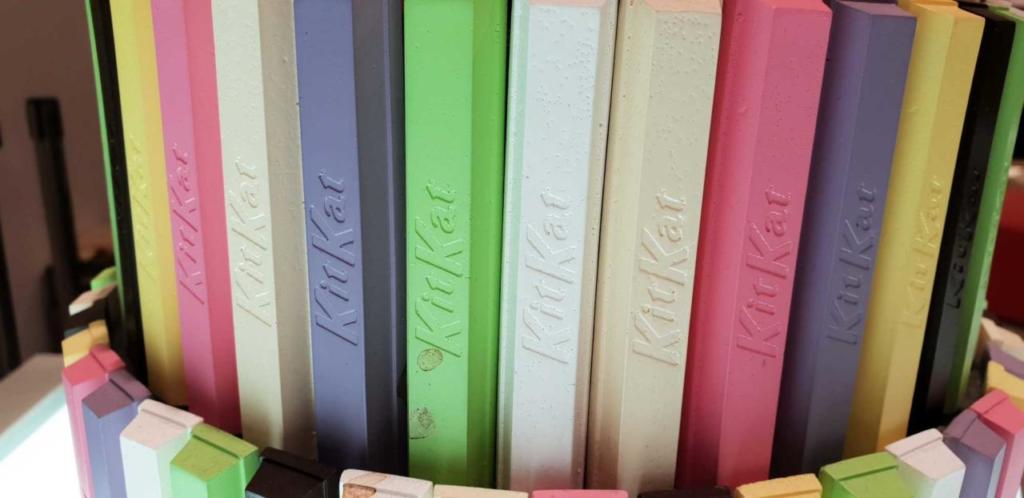
Kit Kat in Japan – you need to try these weird flavours.
If you are in Osaka, you can even make your own Kit Kat at the Kit Kat store in Osaka Namba station. Choose your toppings and watch as they are frozen onto the bar with liquid nitrogen. It’s a little expensive at 730 Yen per bar, but super fun for kids (and chocolate-lovers).
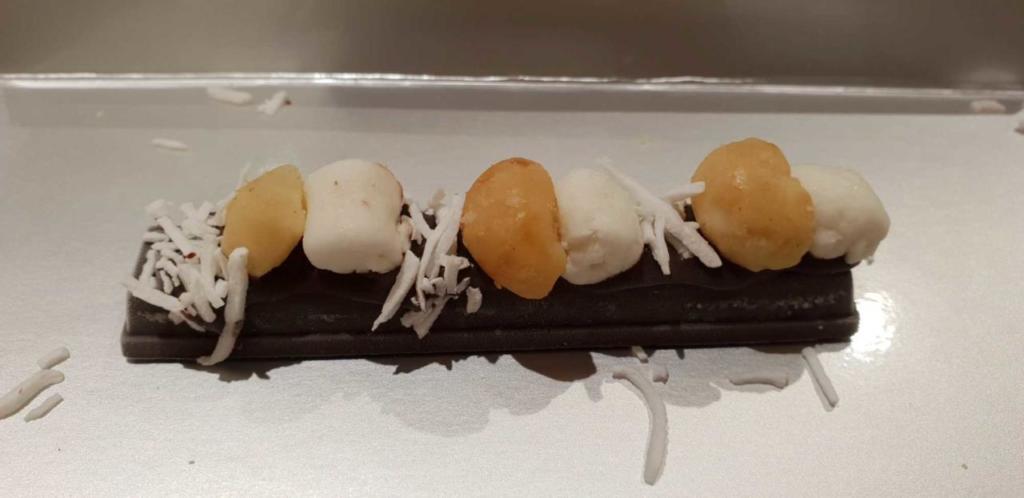
A bespoke Kit Kat bar made in Osaka.
Mochi
Mochi is a sweet cake made from mochigome, a short-
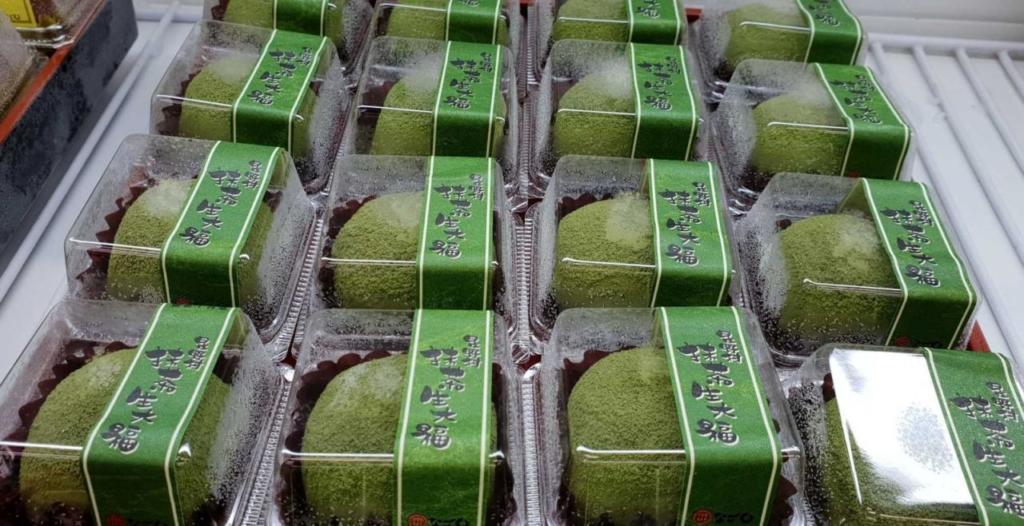
Mochi is a sweet Japanese treat
Universal Studios Osaka – food to try
If you do go to Universal Studios in Osaka – you have to try these three foods.
Butterbeer
Head to the Wizarding World of Harry Potter to taste the famous Butterbeer. You will find barrels of butterbeer in Hogsmeade Villiage. But our tip is to buy it from The Three Broomsticks – the lines are shorter and you can head out to the back terrace for an incredible view of Hogwarts castle.
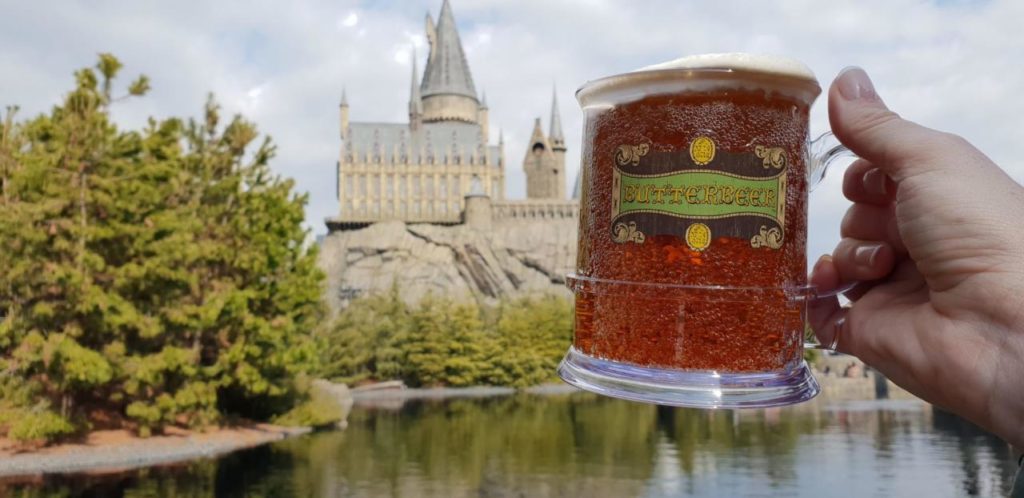
Butterbeer at Harry Potter World Universal Studios Japan.
Bertie Botts every flavour beans
Inside Honeydukes in Hogsmeade village, you will find Bertie Botts every flavour beans. We should warn you – the instructions are in Japanese. You won’t be able to tell which bean you are about to eat unless you cheat and use Google translate. The vomit bean is truly disgusting.
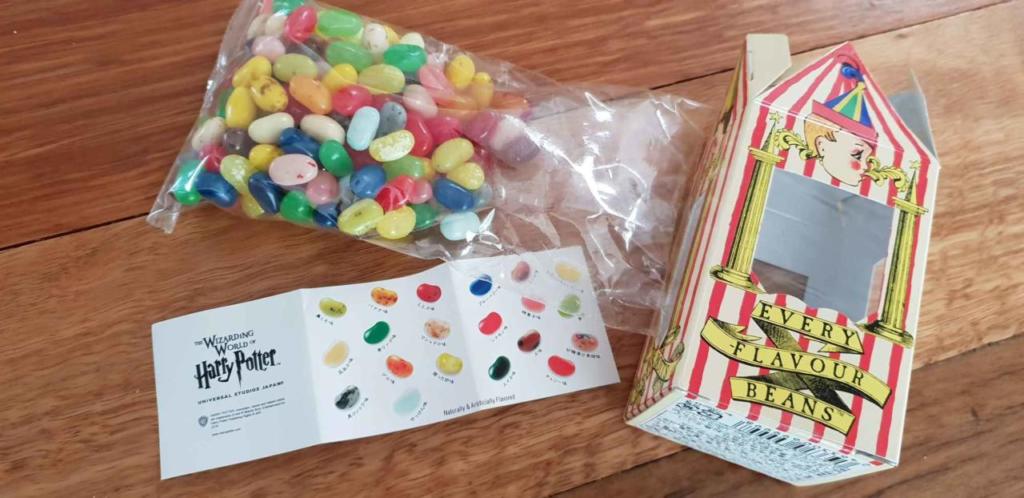
Which flavour do you want?
Minion-shaped ice cream
At Universal Studios Japan’s Minion Park and you can get a minion shaped ice-cream sandwich. They come in chocolate orange, matcha or berry flavours.
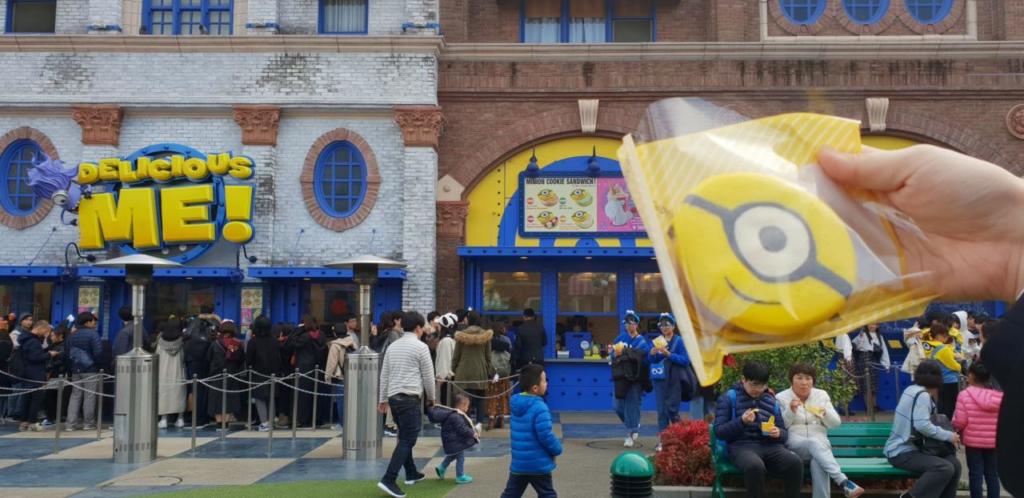
Minion Ice cream at Universal Studios Osaka Japan.
Vending machines
Lastly – when in Japan – you should, at least once, try eating or drinking something from a vending machine.
Top tip for travelling with kids: If you’re ever in need of a quick food hit for the kids – head to the bottom of a department store. The ground floor is usually a food court.
Read more:
Inside Universal Studios Japan (with video)
Japan onsen etiquette – what you need to know
16 mistakes you’re making in Japan
5 reasons to ski Japan with kids

